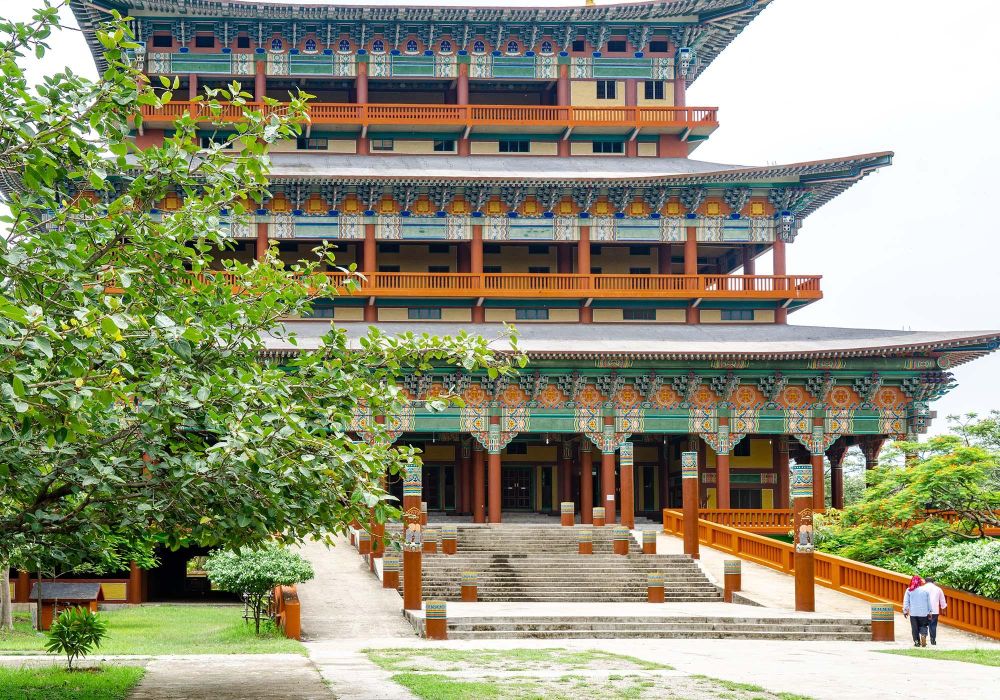

Lumbini, the birthplace of Lord Buddha, has long been a focal point for Buddhists and spiritual seekers worldwide. The history of tourism in Lumbini can be traced back to ancient times when Indian Emperor Ashoka visited the site and erected the Ashoka pillar in 249 BC, indicating the significance of this place. However, modern tourism in Lumbini began to develop more substantially in the 20th century as excavations started unraveling the historical layers of the site. In 1979, Lumbini was designated a UNESCO World Heritage Site, which significantly boosted its international profile and attracted tourists and pilgrims from all corners of the globe.
The Dae Sung Shakya is among the many monasteries and temples built by different countries in Lumbini. It showcases the unique Korean Buddhist architectural style and spiritual traditions, contributing to the rich tapestry of cultural diversity found in this sacred place. Established to provide a space for Korean Buddhists to practice and worship, the temple has become a beacon of peace and attracts visitors interested in exploring the varied expressions of Buddhist devotion and heritage.
The temple's architecture is an embodiment of traditional Korean design with its elegantly curved roofs and vivid colors that stand out amidst the tranquility of Lumbini's landscape. The Dae Sung Shakya is also meaningful as it represents the Korean people's dedication to Buddhism and its teachings. This temple, with its serene environment and spiritual ambiance, is an important stop for many tourists who come to pay their respects and delve into the lifetime of Siddhartha Gautama.
The addition of the Dae Sung Shakya temple has enriched the spiritual tourism experience in Lumbini. Tourists and pilgrims can partake in meditation sessions and attend teachings offered by the Korean monks, which adds to the depth of their spiritual journey. The temple not only serves as a place of worship but also fosters cultural exchange, as visitors learn about Korean Buddhist practices and compare them with the local Nepalese traditions.
In recent years, there has been a shift towards experiential and spiritual tourism, with visitors seeking authentic cultural interactions and personal growth experiences. Lumbini is riding this trend with its offering of meditation retreats, interactive workshops, and opportunities for visitors to live alongside the Buddhist community. The Lumbini Development Trust continues to innovate in preserving the sanctity of the place while providing a welcoming and enriching environment for international visitors.
Lumbini's Dae Sung Shakya temple contributes to Nepal's image as a mosaic of cultural and spiritual heritages, propelling a tourism trend that goes beyond sightseeing to embracing transformation and peace. Visitors from all parts of the world are increasingly attracted to Lumbini, not only to see the birthplace of Buddha but to experience the peace and wisdom that this sacred site imparts.